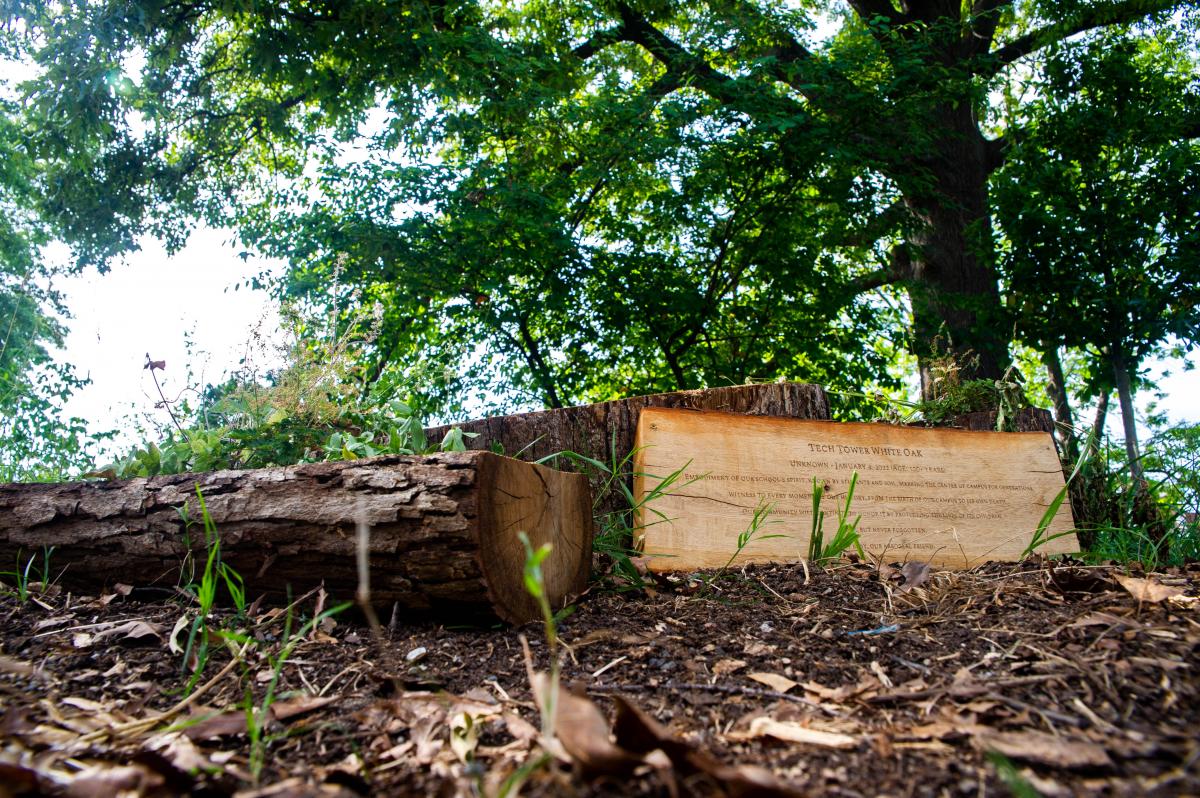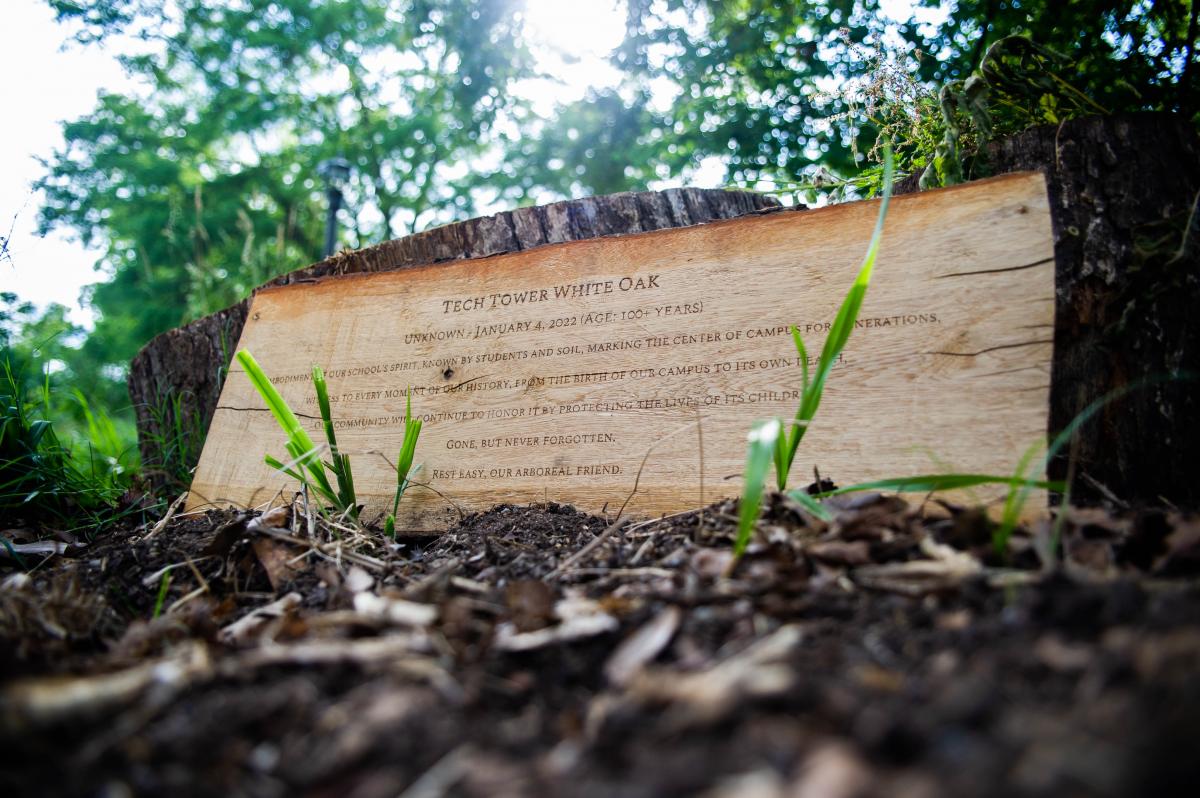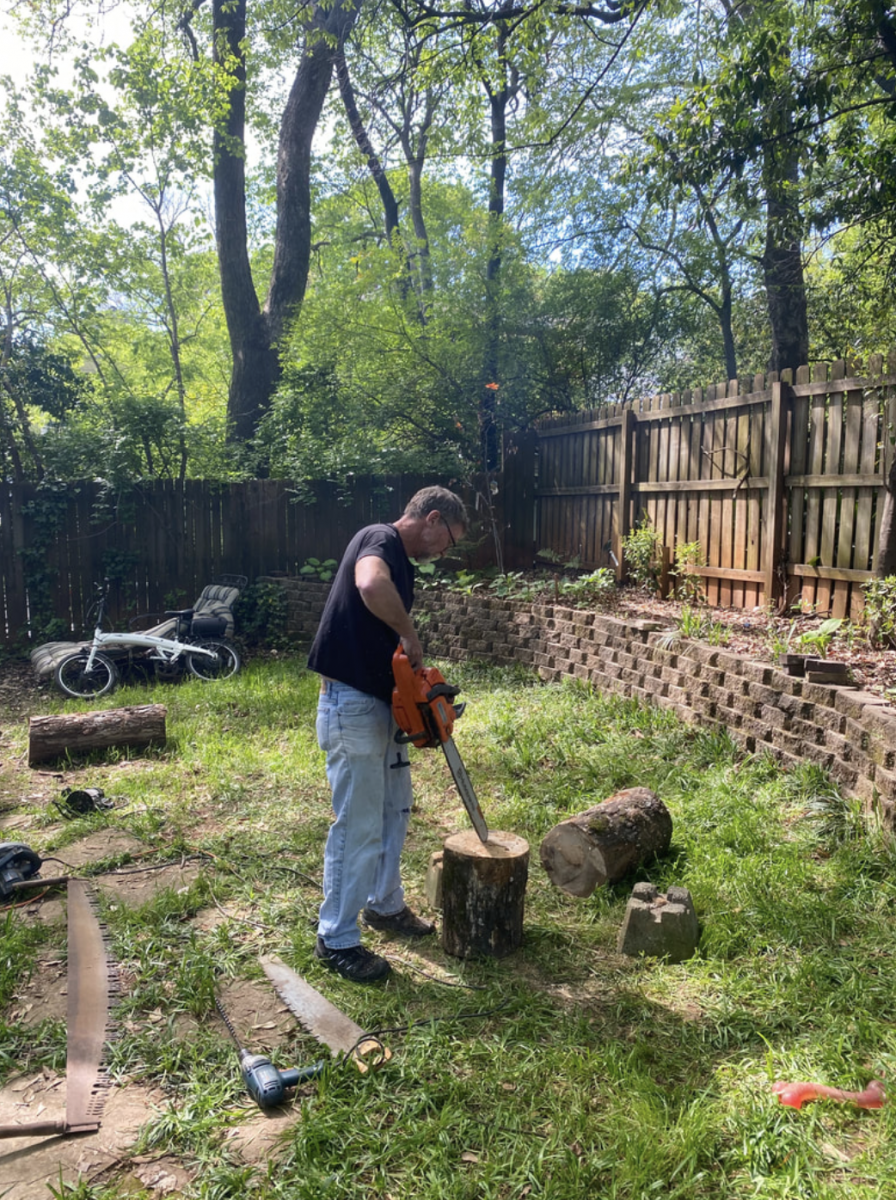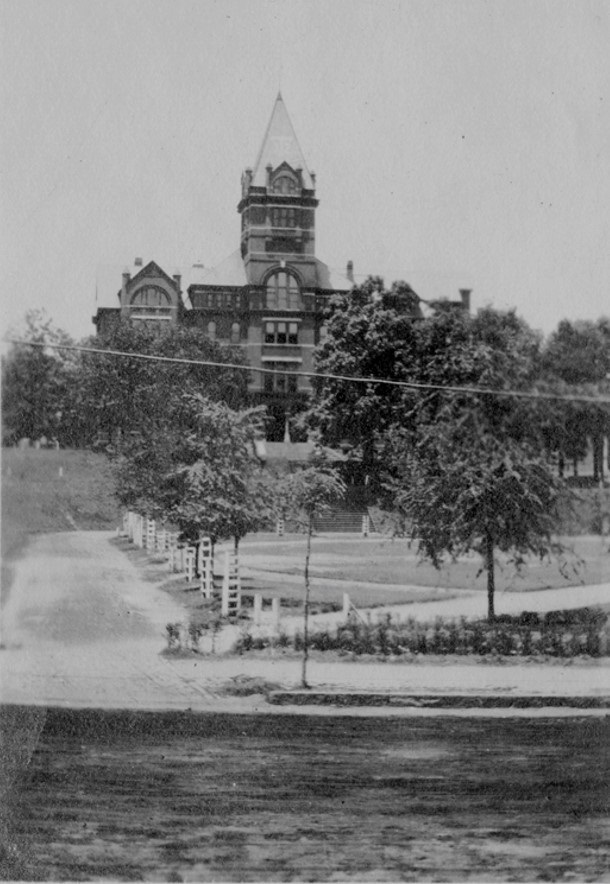
When Georgia Tech announced that the iconic white oak tree in front of Tech Tower would be removed during the winter break due to disease, tree enthusiasts across campus and Atlanta mourned its loss. Although its exact age was unknown, the 103-foot-tall tree appears in campus photographs dating back to 1888 — just three years after the Institute was founded.
Hugh Crawford, associate professor in the School of Literature, Media, and Communication (LMC), took the removal of the century-old tree as an opportunity to engage with students in LMC about our relationship with trees and their cultural history.
Students in LMC 2050: A Cultural History of Trees, sponsored by the Center for Serve-Learn-Sustain, spent the Spring 2022 semester researching the “Tech Tower White Oak” and constructing a memorial garden for the fallen champion, featuring a slice of the tree, planters made from the oak and a laser-engraved epitaph on a piece of the tree.

Embodiment of our school’s spirit, known by students and soil,
Marking the center of campus for generations, witness to every moment in our history,
From the birth of our campus to its own death,
Our community will continue to honor it by protecting the lives of its children.
Gone, but never forgotten.
Rest easy, our arboreal friend.
To showcase their work, the students built a website featuring historic photos of the tree, a photo album of their course building and installing the memorial, interviews they conducted as part of the course, and other information relating to their research into trees.

Crawford previously taught seminars on the cultural history of trees. Recently, he led a class in curating an extensive exhibition on “Big Al,” the student center willow oak that split in Fall 2018.
“I was planning a seminar on environmental studies for the Spring semester when I got a message from the Tech arborist telling me they would be removing the Tech Tower White Oak,” Crawford said. “It made sense to retool the class I had been planning to focus on forests, trees, and particularly, the trees of Georgia Tech and Atlanta.”
Students volunteered with local non-profit Trees Atlanta. They also discussed broader topics related to human-tree relations, including how humans view trees, how that perception has changed over time, and whether trees should have rights.
Nicole Caiati, a second-year LMC major and project leader in the course, said she didn’t know what to expect when she enrolled but wanted to join because she knew the white oak held great meaning for the Georgia Tech campus.

“The Tech Tower White Oak was not just a tree, but a symbol of Georgia Tech’s history, school spirit, and growth,” Caiati said. “We discussed in class that humans often make rash decisions when it comes to nature and its wellbeing. But when it comes to deciding to remove a tree, it’s important to consider the symbolism and significance of a tree’s history and contribution to our environment.”
Having already taken a class with Crawford, second-year LMC major and fellow project lead Taylor Campbell said knowing his teaching style and passion for nature and the environment drew her to enroll. Now, she plans only to consider jobs that coincide with sustainability.
“I believe that preserving trees like the Tech Tower White Oak speaks to what we as humans value in today’s society,” Campbell said. “This class even changed the way that I look at the world. New developments in infrastructure or any new buildings being built that disrupt nature in any way upset me. I can’t even shop at companies anymore if they aren’t committed to sustainability.”
Learn more about Hugh Crawford’s research in environmentalism and ecocriticism on his faculty profile page
